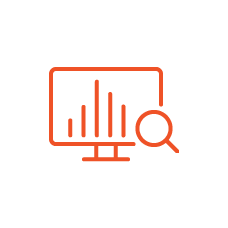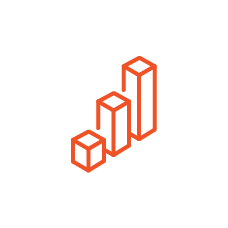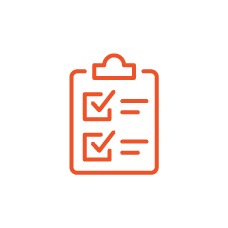We’re on the verge of a disruption never before seen in technology and business. It’s bigger than Uber, more complex than the microprocessor, and stands to change the way we work, learn, live and connect. Here are our top four emerging technology solutions, and when they might be worth considering for your business.
Artificial Intelligence (AI)
Artificial intelligence (AI) refers to technology that demonstrates behaviours associated with human intelligence. By analysing large quantities of data — a process referred to as machine learning (ML) — computers acquire the ability to synthesise new information and make predictions based on patterns observed within that data. The resulting behaviour is akin to problem solving, creativity, planning, and other human-like capabilities.
Recent developments in hardware and machine learning have led to increasingly viable commercial applications for AI. This technology has already found a foothold in the manufacturing, mining, commerce, finance, law, education, transport, automotive and healthcare sectors, with uptake predicted to accelerate each year.
AI might be right for your business if:
- You deal with large scale datasets requiring qualitative and quantitative analysis.
- Your core value proposition involves consumer, market or industry predictions.
- Your repetitive or redundant processes may be good candidates for automation.
- You’ve identified an opportunity to automate your first-level customer service.
Internet of Things (IoT)
Internet of Things (IoT) refers to the interconnectedness of devices, minus the need for human intervention. And this technology existed long before it found its tongue-in-cheek name. The very first “IoT device” came about in 1982, when a small group of Carnegie Mellon University students tinkered with a vending machine, giving it the ability to report on its contents over the network. This first IoT connection “put an end to unsatisfying soda runs once and for all,” according to IBM.
IoT devices have only grown in number and applications since this initial “breakthrough”. From fridges to photo frames, self-driving cars to smart homes, and, of course, the World Wide Web and everything connected to it, the Internet now serves many more “things” than it does people.
Emerging technology solutions like these take businesses to a whole new level of operational sophistication. In conjunction with reliable cloud integration automation services, processes that once required manual intervention and disruptions to productivity can now happen smoothly behind the scenes. IoT technology can provide streamlined workflows and seamless user experiences, no matter where in the world your team may be.
IoT might be worth considering today if:
- You need an efficient, cost-effective way to manage large stocks of inventory.
- You’re refitting your office premises and wish to facilitate greater worker productivity.
- You’ve identified a need for real-time data reporting and enhanced communications.
- You want to save on costs by automating your maintenance and safety procedures.
Robotic Process Automation
Robotic Process Automation (RPA) involves chaining together instructions and technologies to mimic human user actions, and deliver productive output. This translates to significant time and cost savings for businesses losing hours to repetitive tasks, obsolete activities and tiresome “administrivia”.
But while RPA solutions are capable of transforming a battling business into an innovation powerhouse, it pays to consider the limitations of this technology — and indeed any of the emerging technology solutions on the market today.
Automating a flawed process certainly won’t make it better, and could actually lead to wasteful, expensive or ethically questionable results. Consider the scenario of banks mailing out misprinted customer notices by the thousands, or the controversial “Robodebt” debacle of 2016 that took Australia by storm. As with any promising technology, RPA should be carefully planned and implemented to bring out the full benefits.
RPA might work for your business if:
- You can summarise your processes into sets of simple instructions.
- Your customer-facing workflow involves long or multiple forms.
- You serve a large and growing customer base on a personal one-to-one basis.
- You’ve identified the need to monitor inventory, information, equipment or security.
Visualisation
Data visualisation opens up exciting possibilities across every sector. Advancements in graphics processing, virtual reality technologies, augmented reality software, sensors, cognitive frameworks and more means enhanced access to information and reality that might have been previously unseen in data streams.
With Big Data getting bigger and more complex, the ability to make sense of patterns, trends and correlations gives decision-makers the insights critical to claiming a competitive advantage. Meanwhile, as consumer appetite for entertainment grows ever more voracious, the engagement delivered by visualisation could one day mean the difference between obscurity and success.
You may want to think about data visualisation now if:
- You deal with large-scale, abstract or complex data.
- You’re in the process of preparing a new operational or commercial strategy.
- Your operational footprint spans large or hard-to-access geographical spaces.
- Your business targets the ecommerce, marketing, manufacturing, healthcare, education or finance verticals.
Prepare for the future
Emerging technology solutions can only ever be as good as the people who create them.
Whether you’re revolutionising your supply chain, innovating your office premises or making information more accessible to your target market, you’ll need partners who can guide you through every available option to determine what will work best for your specific needs.
Tecala helps you adopt emerging technologies for real business outcomes. We combine ground-breaking new tech with tried and tested cloud integration automation services, to produce innovative results every time. Investigate your options with us.







